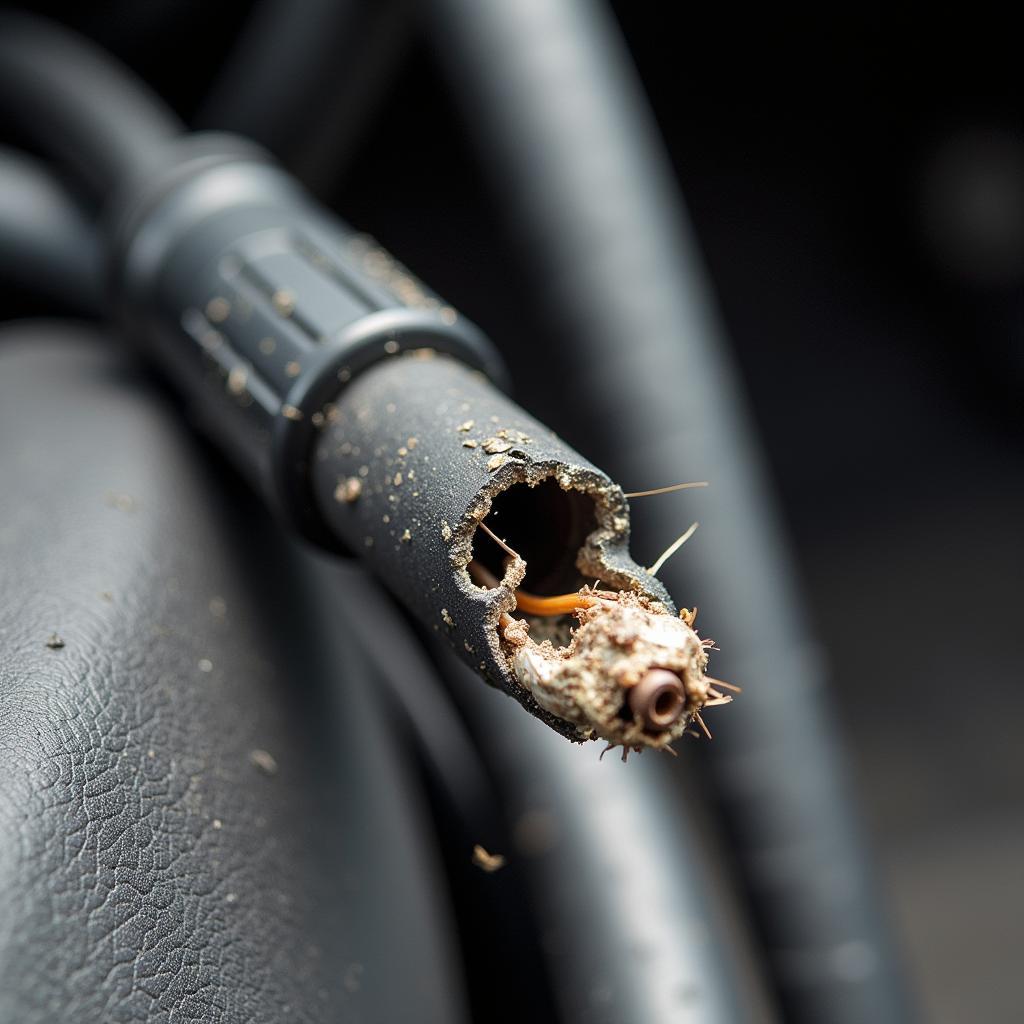Fixing a sagging or damaged car ceiling can dramatically improve the interior aesthetics and comfort of your vehicle. Whether it’s due to age, heat damage, or accidental impact, this guide provides a comprehensive approach to how to fix a ceiling in a car, offering solutions for various common problems.
Understanding Your Car Ceiling
Before diving into repairs, it’s crucial to understand the construction of your car’s ceiling, often referred to as the headliner. It typically consists of a thin fabric or vinyl material glued to a backing board, usually made of cardboard or fiberglass. This board is then attached to the car’s roof frame. Knowing the materials involved will help you choose the right repair strategy.
Common Car Ceiling Problems and Solutions
Several issues can plague a car ceiling. Here are some of the most common:
Sagging Headliner
A sagging headliner is perhaps the most frequent problem. This occurs when the adhesive holding the fabric to the backing board weakens, causing the fabric to droop.
- Temporary Fix: Using pins, thumbtacks, or even small Velcro strips can temporarily secure the sagging fabric. This is a quick fix but not a permanent solution.
- Permanent Fix: For a long-lasting repair, you’ll need to reglue the headliner. Specialized headliner adhesive is recommended. Remove the headliner board, carefully scrape off the old adhesive, apply new adhesive, and reattach the fabric. Ensure a smooth, even finish.
Stains and Marks
Stains from spills or marks from contact can detract from the appearance of your car’s ceiling.
- Cleaning: Use a gentle cleaner specifically designed for automotive upholstery. Test the cleaner on a hidden area first to ensure it doesn’t damage the fabric. Gently blot the stain, avoiding harsh rubbing.
- Stubborn Stains: For persistent stains, consider using a specialized stain remover. Follow the manufacturer’s instructions carefully.
Tears and Rips
Tears and rips in the headliner fabric require patching or replacement.
- Patching: Small tears can be patched using a fabric repair kit or a piece of matching fabric and adhesive. Ensure the patch is securely attached and blends in with the surrounding material.
- Replacement: For larger tears or extensive damage, replacing the headliner fabric might be the best option. This requires removing the headliner board and carefully stretching the new fabric over it.
Burns and Holes
Burns or holes in the headliner often require more extensive repair.
- Small Burns/Holes: Depending on the size and location, you might be able to patch them using a similar method as for tears.
- Larger Damage: For significant burns or holes, replacing the entire headliner board might be necessary.
How to Remove and Reinstall the Headliner Board
Removing and reinstalling the headliner board is a key part of many ceiling repairs. Here’s a general guide:
- Remove all interior trim pieces that obstruct access to the headliner board, such as sun visors, grab handles, and dome lights.
- Carefully detach the headliner board from the roof frame. It might be held in place with clips, screws, or adhesive.
- Once detached, lower the headliner board carefully. You may need to maneuver it out of the vehicle.
- Reinstallation follows the reverse process, ensuring all connections are secure.
Preventing Car Ceiling Damage
Prevention is always better than cure. Here are some tips to prevent car ceiling damage:
- Avoid Smoking: Cigarette smoke can stain and damage the headliner.
- Clean Spills Promptly: Address any spills immediately to prevent staining.
- Protect from Sunlight: Parking in shaded areas or using sunshades can help protect the headliner from UV damage.
- Handle with Care: Avoid bumping or hitting the ceiling when entering or exiting the vehicle.
“A well-maintained car ceiling can significantly enhance the overall interior appearance,” says renowned automotive expert, Michael Stevenson. “Taking preventative measures and addressing issues promptly can save you from costly replacements down the line.”
“Regular cleaning and careful handling can prolong the life of your car’s headliner,” adds automotive restoration specialist, Emily Carter. “Addressing small issues like stains or sagging early on can prevent them from escalating into more serious problems.”
Conclusion
Knowing how to fix a ceiling in a car empowers you to address common issues and maintain a pristine interior. By following these guidelines and taking preventative measures, you can keep your car looking its best. For further assistance or if you prefer professional help, feel free to contact AutoTipPro at +1 (641) 206-8880 or visit our office at 500 N St Mary’s St, San Antonio, TX 78205, United States.







Leave a Reply